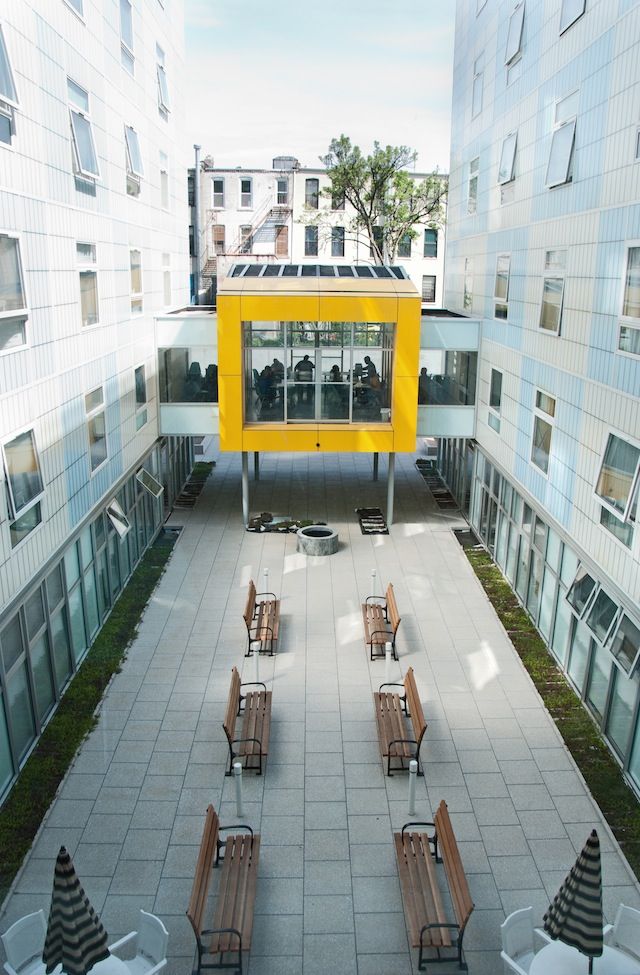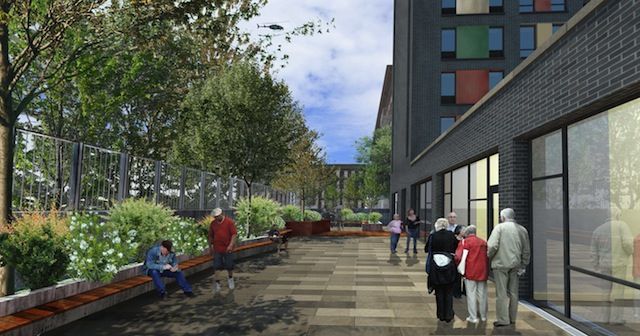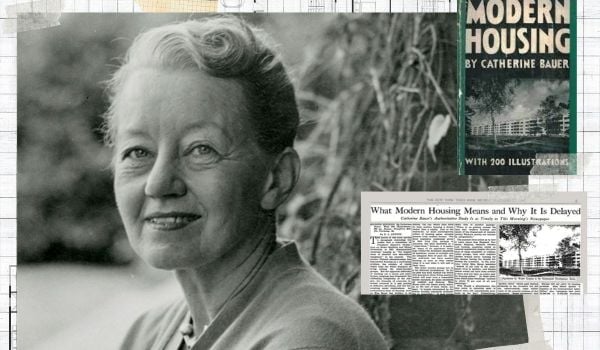Since 1990, Common Ground has worked to create affordable and supportive housing for homeless and vulnerable New Yorkers. Today, the organization has almost 3,200 units of permanent and transitional housing in the five boroughs, Connecticut and upstate New York. It’s the largest developer and operator of supportive housing in the region.
Executive Director Brenda Rosen has been with Common Ground in many different capacities since 1999. Here, she talks about the group’s newest initiatives, aging in place seniors, why supportive housing can cut down on health care costs, and the various ways Common Ground goes about funding its programs.
Next City: You broke ground earlier this month on a new, 12-story affordable housing development in the Bronx. How many units are there, and what is the focus of the building?
Brenda Rosen: That project is going to be a home for 154 individuals, both people that are formerly homeless and with mental illness and, oftentimes, a substance abuse disorder. It will also be home to low-income working individuals. There will be a preference for seniors.
In addition to that population mix, there is also going to be some of the highest cost users of Medicaid services in the state. They’re expensive consumers of medical services — people that have been using emergency rooms as their shelters for the night, people who have had repeated hospitalizations because they’re ill and on the streets.
NC: So by bringing them into supportive housing, they’re less likely to rack up huge bills by going to the ER?
Rosen: It is a way to absolutely reduce the medical costs for these individuals. When you give somebody a stable home with onsite support, the likelihood of them having to go to the hospital and use emergency rooms and call EMS is reduced. You’re going to save money, even though there’s going to have to be money put into the development and operation of the supportive housing. That is going to cost you way less than what it would cost to keep somebody homeless on the streets [and] using emergency rooms.
[Supportive housing costs approximately $40 per night to operate. The Lewin Group’s “Costs of Serving Homeless Individuals in Nine Cities” found that a city shelter bed costs $54, a state prison cell $74, a psychiatric bed $467 and a hospital bed $1,185. – Ed.]
NC: What is the financing model for this, both to break ground and develop it as well as to pay for operation costs in the long run?
Rosen: When we do a supportive housing project it is a giant puzzle of financing. In a nutshell, we’ve used tax-exempt bonds, capital subsidies from the city and state, and low-income tax credits. So we have investors in the building. In this case, part of the capital component on the state side is the the Medicaid Redesign Team [MRT] funding that the government has put into the budget to develop and operate supportive housing. [The development will cost $47.7 million. They received $6.9 million in MRT funding and $1.6 million in low-income tax credits. – Ed.]
There’s not a lot of funding these days. MRT money is a huge piece of the development. In terms of ongoing operations, we have tenant rent coming into the building, because 40 percent of those units are for working individuals or people who have some sort of retirement income. We also have subsidies provided through project-based Section 8 for formerly homeless individuals.

Common Ground’s Domenech Building in Brownsville Brooklyn, where the ECHO program is being piloted.
NC: This summer you launched a pilot program in three of your supportive housing programs in the city for the aging in place. How can that help reduce health care costs?
Rosen: The Elder Care Health Outreach program [ECHO] is designed to help people age in place. We have long wrestled with how to provide the necessary services to allow people to stay in their homes. They don’t want to leave and go into expensive nursing homes, or other levels of care that cost more and don’t feel comfortable. Years ago, our staff would try to get on wait lists to get into nursing homes. That’s completely contrary to what the state wants to do and what we want to do. Everybody is looking to move people out of nursing homes and into independent living.
NC: And ECHO helps the tenants in these three buildings with their medical needs?
Rosen: People that have come in after having years of homelessness on the streets come in at a certain age, but their body is much older. There have been studies done on this, where a 58-year-old man, after having been on the streets for a number of years, has medical needs that turn him into a 78-year-old man.
A lot of people who are coming [have] a lot of unmet medical needs. In order to address those needs we developed a pilot that would combine primary medical care on site with tenant services, which are tenant activities that would be additive to the medical component and help give our tenants tools they need to stay in their homes and live independently — everything from nutrition workshops to fall prevention classes on balancing. The way I think about it is a bit old fashioned, in that you have a doctor or a nurse practitioner who has her little black box that she walks around with and makes home visits. The response that the tenants have had to services we’ve offered has been unbelievable.
NC: On some level, might there be aggregate benefit to local businesses by making your tenants more independent and saving them money on health costs?
Rosen: I don’t think it’s pie in the sky to think about those things at all. One thing we did from the outset was have each tenant do a comprehensive survey for us around their quality of life. What are the things that you think would help you maintain or regain independence? And what we heard was, “I can’t go food shopping, because I’m afraid to walk alone.” Or, “I don’t have the energy to walk down the block.” So what can we do? Provide activities to help people improve their physical health so that they then feel comfortable walking down the street to the supermarket.
The Equity Factor is made possible with the support of the Surdna Foundation.

Bill Bradley is a writer and reporter living in Brooklyn. His work has appeared in Deadspin, GQ, and Vanity Fair, among others.

















